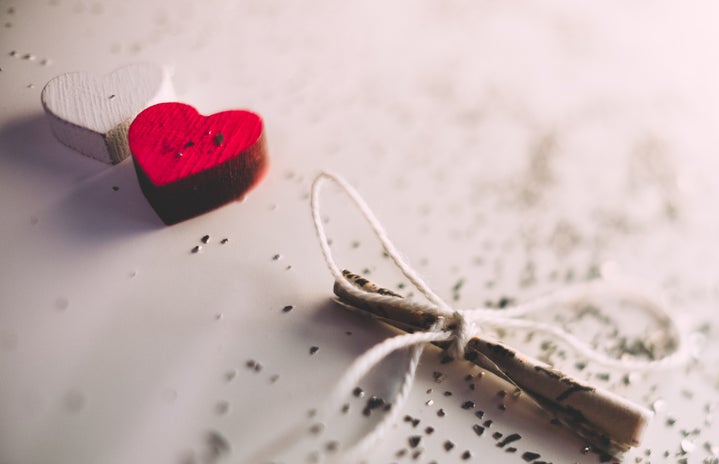This article is part of our “Cupid at Kenyon” series, in which our writers talk about Valentine’s Day.
Valentine’s Day can be isolating for many. February is flooded with the idea of romantic love, and when you’re alone, it can be difficult to see giddy couples showering one another with gifts. However, when you’re queer this feeling of isolation can be even worse.
Everywhere you look there are advertisements of straight couples, young and old, displaying their love with flowers and chocolates (not to mention the multitude of “His and Her” items on the shelf of every convenience store). Like most holidays, Valentine’s Day is now fueled by consumerism. During this time companies pump out romantic ads and flower companies flourish like never before. But as a queer person, it can seem very clear by these products, companies, and traditions that this holiday isn’t really made for you.
There is little to no representation of couples from the LGBTQ+ community in any aspect of Valentine’s Day. When you’re single, love can seem very far out of reach, but seeing only the portrayals of straight couples can make love as a queer individual seem completely unattainable. Even in a queer relationship, it can be invalidating to be totally unrepresented in this time of grandiose love—love that you know you can experience just as much as the well-represented straight couples. Even things as simple and abundant as Valentine’s Day cards are hard to find for a significant other when you’re a queer couple. (And it’s hard to even find stock images of queer couples on Valentine’s Day.)
The issue also lies within the strict gender roles of Valentine’s Day. There’s the classic trope of the man forgetting about the holiday altogether, and the woman becoming upset because she feels that he doesn’t really love her. Or the expectation of only the man buying the gifts for the woman. These tropes can be frustrating even for straight couples, as a woman could easily shower her boyfriend in gifts or she could just as easily not care about the Valentine’s Day altogether. The gender specified narrative leaves very little room for queer and genderqueer individuals to feel as though this holiday can apply to them. Where can one possibly go to find “Her and Her” labeled mugs, or a loving card not labeled for him or her? A day completely dedicated to love seems to completely forget every single year that love can occur between anyone regardless of their sexual orientation or gender identity.
Despite the problematic traditions and the non-inclusive commercialization of love, Valentine’s Day is still going to happen as it always has. It’s important to remember that the image created for this holiday isn’t the only valid form of love. You may choose to ignore this holiday completely as many try to do, but if that seems impossible you must remember that all forms of love are valid. Despite what is portrayed, the love you feel in your queer relationship, the love between your family, the love between your closest friends and even finding love for yourself are all valid, genuine forms of love that can be celebrated this Valentine’s Day.


